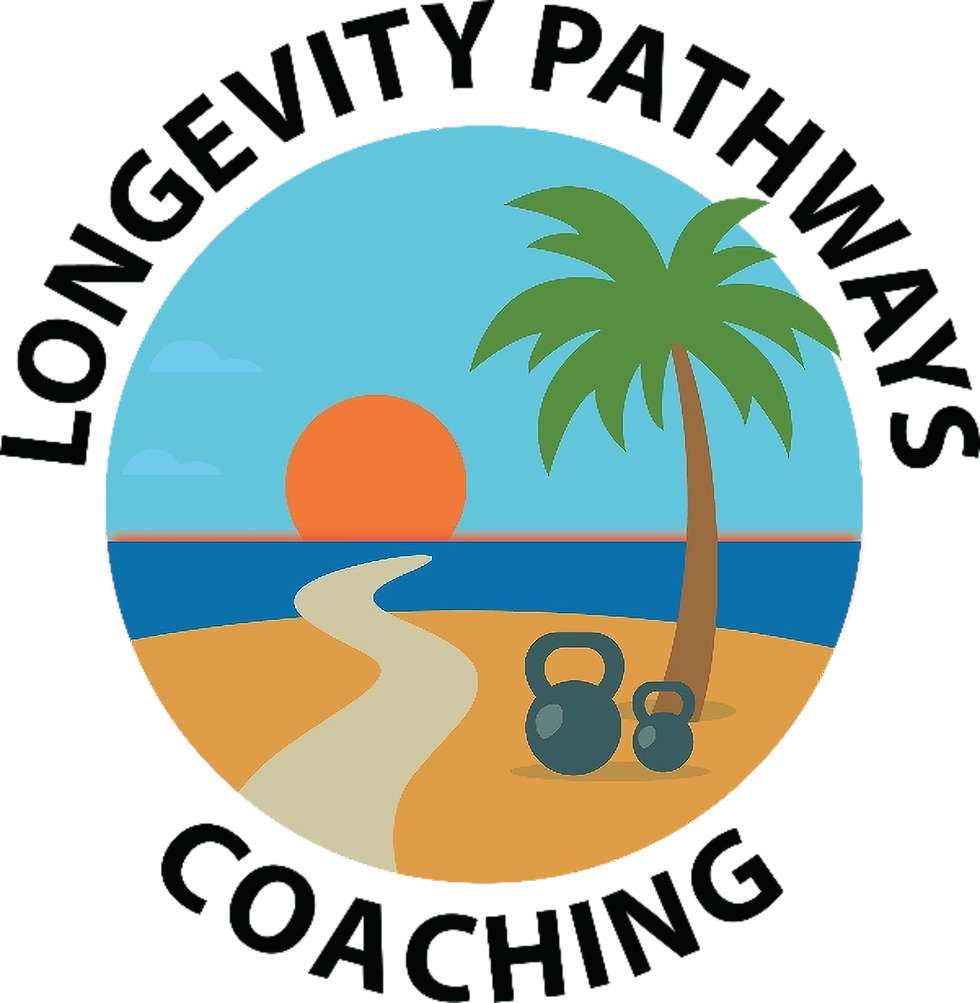Longevity Explained
- Phillip Keith

- Sep 30
- 3 min read
What Does Longevity Mean to Me?
Everyone has their own ideas of what longevity means to them. None of them are necessarily wrong. And as we age our perception of longevity changes.
Living longer doesn’t always mean living healthier. A major study across 183 countries found that people, on average, live more than 9 years beyond their 'healthy years' with some type of injury, disability or chronic disease. And in the U.S. that gap is closer to 12.4 years! Source: AMA Network Open, Global Burden of Disease Study on Lifespan vs. Healthspan (2025) These statistics, and countless others, indicate that much of our later years are spent managing heath issues which may have been preventable. We lose our ability to stay active, travel and live independently.
My definition of longevity goes far beyond how many years we are on this earth. Age is not my ultimate goal! Yes, living a long time is important. But equally as important is the quality of those years! By quality I mean the ability to stay active, mindful, independent, and happy. The combination of years lived (lifespan) and quality of those years (healthspan) is the real essence of longevity.

How Do We Practice Longevity?
I believe that longevity is a melting pot of many things. It isn't just about exercise. Or doing crossword puzzles every day. There is no single miracle solution for keeping our body, mind, and spirit young forever. The answer lies in a DAILY regimen consisting of four pillars. Daily practice of the four pillars are an integral part of our pathway to longevity. Missing just one of these pillars has a significant detrimental impact! Properly incorporating the pillars to their fullest extent is the mission at LONGEVITY PATHWAYS COACHING!

What Science Says About Longevity
1. Exercise Is Powerful Medicine
Movement is one of the most reliable ways to extend both age and quality of life.
People who did 2 to 4 times the minimum recommended weekly exercise had a 26–31% lower risk of all-cause mortality compared to sedentary peers. Source: American Medical Association, Exercise and Mortality Study (2022)
In older adults, combining aerobic, resistance, balance, and flexibility training preserves mobility and quality of life. Source: PubMed, Multicomponent Training in Older Adults (2024)
Reviews even describe exercise as “a longevity drug”—improving nearly every hallmark of aging without the side effects of pharmaceuticals. Source: Frontiers in Aging, Exercise as a Longevity Drug (2024).
Takeaway: Whether it’s strength training, brisk walking, or Tai Chi, consistent movement is one of the most powerful “anti-aging” tools available.
2. Nutrition Shapes Cellular Aging
Food choices influence aging down to the DNA level.
Adults with diets high in processed foods and sugary drinks showed signs of accelerated biological aging, while those eating more whole foods aged more slowly. Source: Medical News Today, Diet and Epigenetic Aging (2025)
In older adults, a three year study combining omega-3 supplementation, vitamin D, and exercise slowed their biological aging rate by 3–4 months compared to controls. Source: The Guardian, Omega-3, Vitamin D, and Exercise Slow Aging (2025).
Research also shows that anti-inflammatory eating patterns, such as the Mediterranean diet, reduce the risk of heart disease, cognitive decline, and early death.
Takeaway: Longevity thrives on whole, minimally processed foods, lean protein, vegetables, fruit, and healthy fats. Supplements may support health, but they are not magic.
3. Stress, Sleep & Recovery
Poor sleep is strongly linked to cardiovascular disease, dementia, and shortened lifespan.
Practices such as yoga, Tai Chi, meditation, and breathwork help lower stress hormones that accelerate aging.
Rest and recovery allow the body to repair, recharge, and regulate inflammation—key to maintaining vitality.
Takeaway: Longevity isn’t only built in the gym or kitchen—it’s also built while you sleep.
4. Social Connection and Purpose
One often-overlooked factor in longevity is human connection.
Studies from the “Blue Zones” (regions where people regularly live past 100) show that purpose, community, and strong relationships are as important as diet and exercise for extending life.
Loneliness, on the other hand, has been shown to increase the risk of early death by as much as 26%—a greater risk than obesity or physical inactivity.
Takeaway: Stay engaged with family, friends, and community. Social health is longevity health.
Adding Life to Your Years
Longevity is not found in a needle or a bottle or some fad diet. It’s built day by day, through consistent habits that keep your body strong, your mind sharp, and your spirit fulfilled.
The formula is simple, but powerful:
Move your body every day.
Eat whole, nourishing foods.
Rest, recover, practice mindfulness, and manage stress.
Stay connected and live with purpose.
This is how you add life to your years, not just years to your life!






Comments